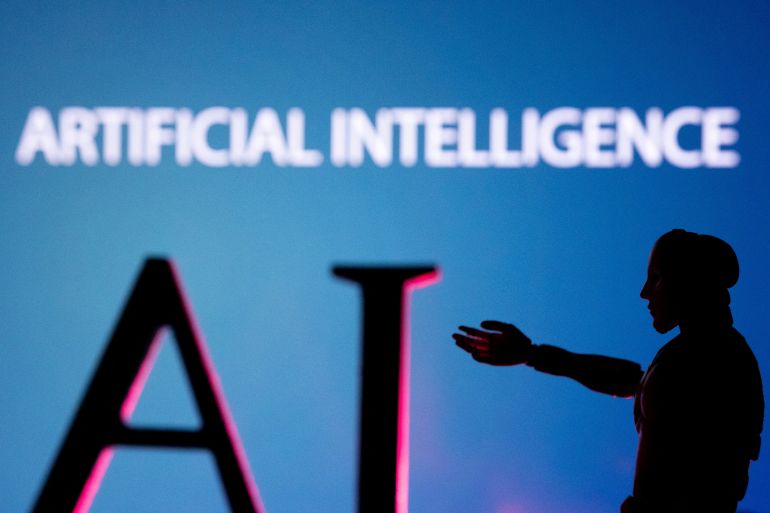Can AI mediate conflict better than humans?
For decades, humans skills alone enabled dispute resolution. Now, AI could help, say experts. But risks loom too.

Doha, Qatar – Diplomats whizzing around the globe. Hush-hush meetings, often never made public. For centuries, the art of conflict mediation has relied on nuanced human skills: from elements as simple as how to make eye contact and listen carefully to detecting shifts in emotions and subtle signals from opponents.
Now, a growing set of entrepreneurs and experts are pitching a dramatic new set of tools into the world of dispute resolution – relying increasingly on artificial intelligence (AI).
Keep reading
list of 3 itemsZimbabwe’s new gold-backed digital currency: All you need to know
Fax machines and cash-only stores: Japan struggles to go digital
“Groundbreaking technological advancements are revolutionising the frontier of peace and mediation,” said Sama al-Hamdani, programme director of Hala System, a private company using AI and data analysis to gather unencrypted intelligence in conflict zones, among other war-related tasks.
“We are witnessing an era where AI transforms mediators into powerhouses of efficiency and insight,” al-Hamdani said.
The researcher is one of thousands of speakers participating in the Web Summit in Doha, Qatar, where digital conflict mediation is on the agenda. The four-day summit started on February 26 and concludes on Thursday, February 29.
Already, say experts, digital solutions have proven effective in complex diplomacy. At the peak of the COVID-19 restrictions, mediators were not able to travel for in-person meetings with their interlocutors.
The solution? Use remote communication software Skype to facilitate negotiations, as then-United States envoy Zalmay Khalilzad did for the Qatar-brokered talks between the US and the Taliban in 2020.
For generations, power brokers would gather behind doors to make decisions affecting people far and wide. Digital technologies can now allow the process to be relatively more inclusive.
This is what Stephanie Williams, special representative of the United Nations’ chief in Libya, did in 2021 when she used a hybrid model integrating personal and digital interactions as she led mediation efforts to establish a roadmap towards elections. That strategy helped her speak to people living in areas deemed too dangerous to travel to. The UN estimates that Williams managed to reach one million Libyans.
However, practitioners are now growing interested in the use of technology beyond online consultations.
Geographic information systems (GIS) store information in maps to monitor ceasefire agreements. Virtual reality (VR), meanwhile, creates immersive environments that can provide diplomats with a deeper understanding of what is happening in faraway crises they are mediating.
In 2021, the UN invited a group of diplomats to try out VR to understand the work of its verification mission in Colombia on the country’s peace process. Ambassadors said they were given an extraordinary glimpse of the context, fear and feelings that people in the country were going through.
“It’s more direct, more emotional, it’s less letters and papers,” said one of the diplomats.
“It could increase your awareness and that can make diplomacy more effective,” said another one.
AI technology also enables the speedy analysis of large volumes of data, crunching months of work into minutes for a machine to read public sentiments and flag emerging threats to peace processes. Machine learning can discern patterns or correlations and help create scenarios about what stakeholders could do and when.
A UN initiative developed a pilot project in Uganda that used AI tools – such as speech recognition technology – to analyse large amounts of information from radio broadcasts so that researchers could get a sense of public sentiments on issues ranging from climate change to refugees fleeing from South Sudan.
But it’s not all rosy. AI is developed by engineers who, as like every human being, have their own biases. The technology is fed with data from the internet, which can reinforce or amplify existing social prejudices and promote discrimination, experts warn.
Meanwhile, authenticating information and collating complex evidence is paramount at a time when faking images or news has become extremely easy.
“In any conflict resolution, you need a shared basis of evidence so that both parties are coming into that mediation saying, ‘this is what we all know is true’,” said Mansoor Ahmed-Rengers, founder of OpenOrigins, an app that helps detect whether a picture is human or AI-generated.
“If there’s no basis for a shared belief or a shared understanding of a situation, there’s no mediation that can happen,” said Ahmed-Rengers, who is also attending the Web Summit.
Technology can help. Information, online legal resolutions or voting records must be authenticated and stored in a secure place to not be corrupted. A bank’s ultra-secure vault deep underground is of no use in the Web 3.0 era. Today, the goal is to store digital material in as many places as possible, say analysts. This is what blockchain technologies do. They keep the material in an immutable and decentralised system.
Digital technologies are becoming more common in peacemaking, and they allow mediators to see conflicts from new angles, said Richard Gowan, UN’s director for the International Crisis Group.
“But I also think that we should remember that the heart of any political process remains wheeling and dealing between individuals who have deeply held prejudices, fears and ideologies,” said Gowan.
“Unless we develop the technology from the Men in Black films that wipes out people’s memories, the human dimension of peace will remain crucial.”